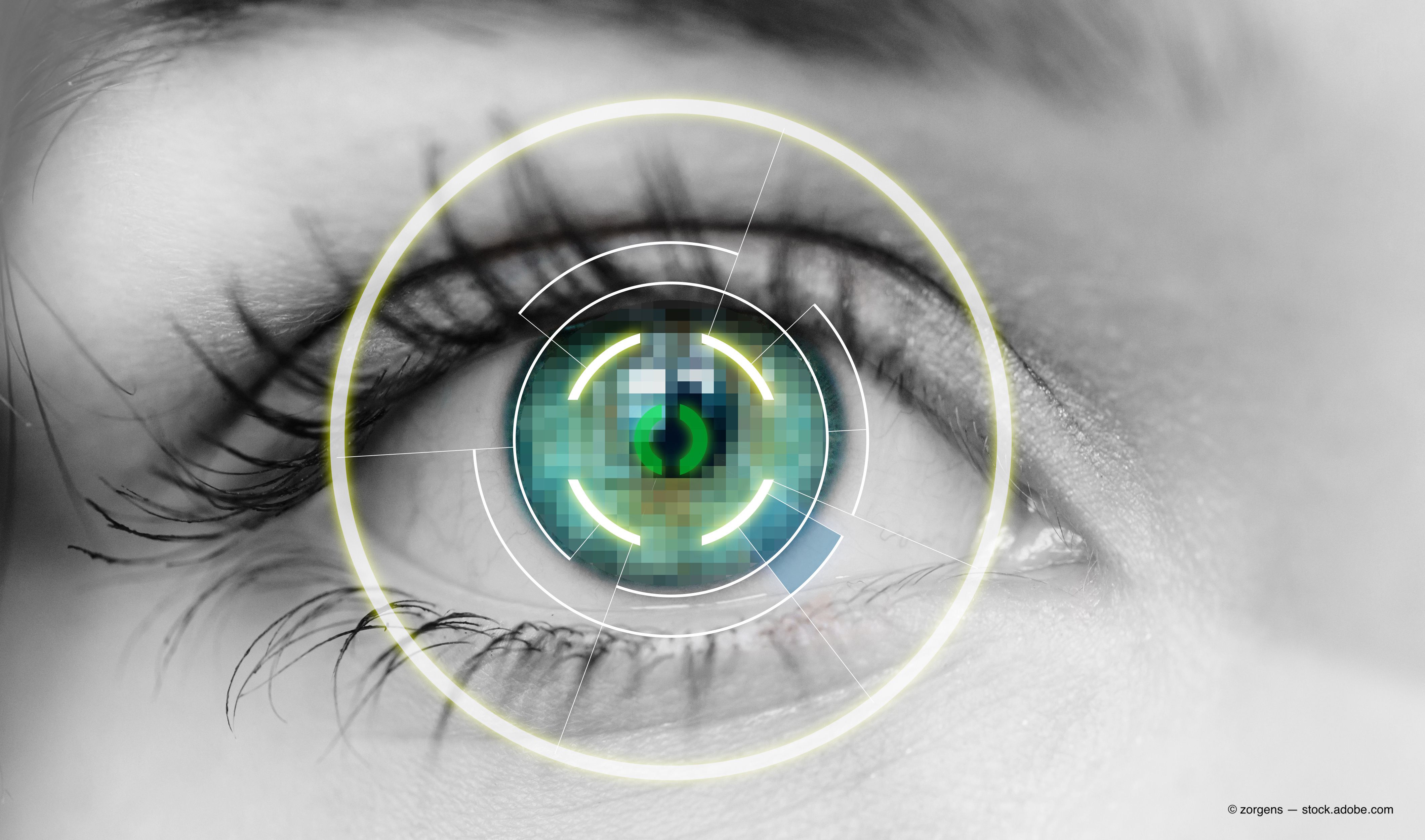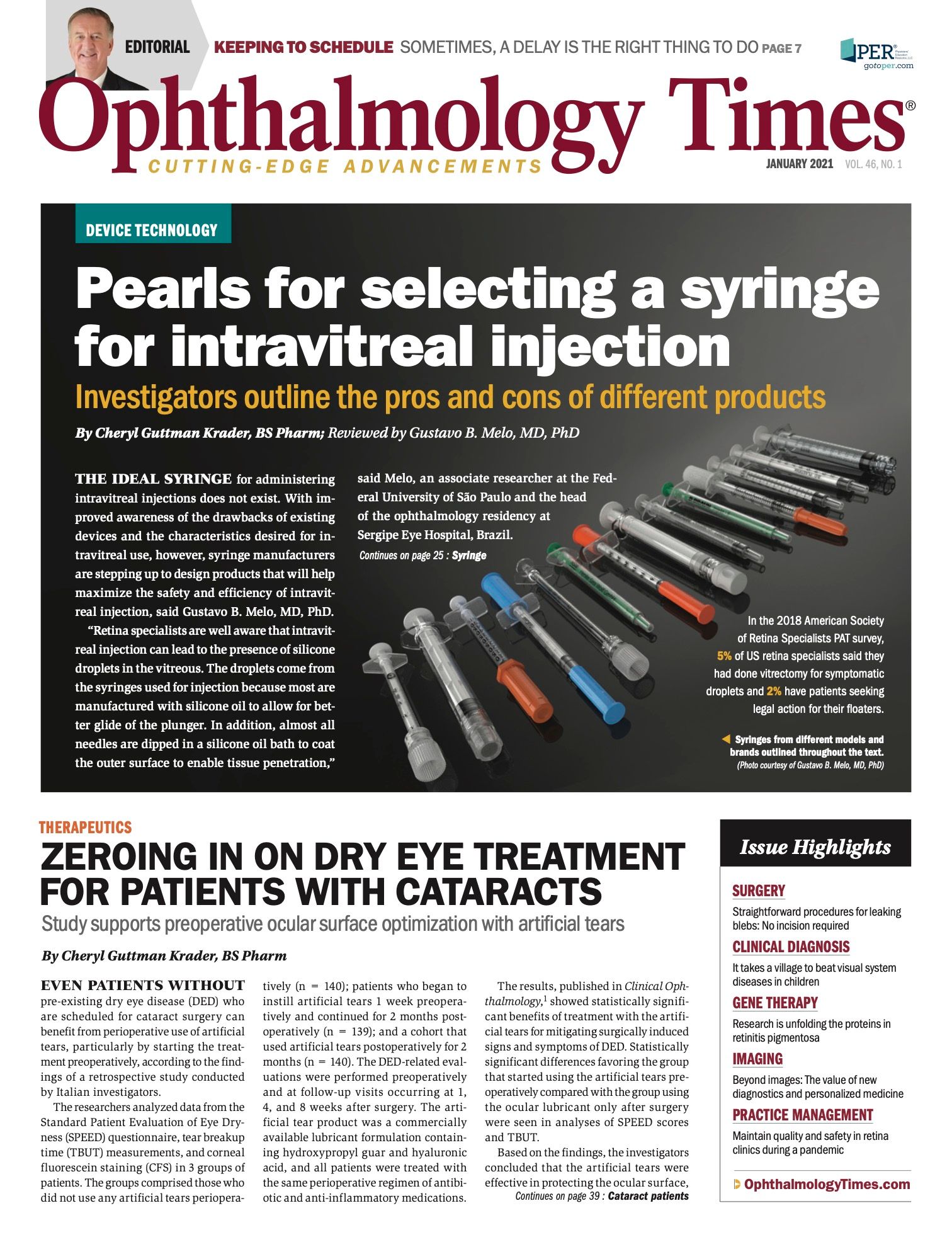Publication
Article
Digital Edition
The value of new diagnostics and personalized medicine
Author(s):
Emerging technology may facilitate individualized care, disease management.

This article was reviewed by Justis P. Ehlers, MD
There is a great need for precision medicine in retinal disease, and Justis P. Ehlers, MD, explained that precision medicine and image-guided metrics will help optimize diagnostic efficiency, risk stratify patients more quickly and accurately, and determine treatment risk and benefit.
Moreover, Ehlers said it also can enable an individualized therapeutic approach with targeted clinical trial enrollment as more therapeutics become available, the ability to understand treatment failures, and improve economic models.
Related: Ocular gene therapy offers hope for inherited retinal disease
Ehlers is the Norman C. and Donna L. Harbert Endowed Chair for Ophthalmic Research at the Cleveland Clinic’s Cole Eye Institute, and director of the Tony and Leona Campane Center for Excellence in Image-Guided Surgery and Advanced Imaging Research at the Cleveland Clinic in Cleveland, Ohio.
While considering these needs, artificial intelligence (AI) often is considered as a solution. While AI could be a great asset to help in decision-making processes, caution must be exercised in the “black box” nature of some the algorithms.
As Ehlers pointed out, AI has the potential to be used nearly everywhere in patient care, “but more specifically, there is great opportunity for use of AI in automated detection of disease; automated disease characterization, such as in severity grading; big data assimilation for risk stratification or diagnostic accuracy; enabling next-generation disease interrogation, creating opportunities not possible previously; enhancing current analysis platforms to improve efficiency and accuracy of workflow; and opportunities in pattern recognition and phenotype classification using pharmacogenomics or imaging genomics to understand underlying diseases.”
Related: Developing retinal technologies strengthen visualization
AI needs
In order to train neural networks, he explained, datasets of sufficient sizes and quality are needed composed of either annotated or raw images.
“In understanding AI technology, I think that understanding the ‘thought process’ is important, that is, how is the computer actually evaluating a feature of interest, how is it interpreting a finding, and what happens when things go wrong with AI systems?” Ehlers said.
Al use in diabetic retinopathy (DR) image grading was found to be successful in detecting the stages of DR. The recognition of this capability paved the way for FDA approval of AI-based image assessment and diagnostics.
The role of AI in image analysis is being expanded by many research groups. The IDx Platform (Digital Diagnostics) is a companion piece to a standard fundus camera that uses software to detect DR that is worse than mild disease.
Related: Teleretinal screening: Effective, less costly option for DR
The technology has 87% sensitivity and 90% specificity of identifying more than mild DR and was able to identify all patients with DR of level 43 or higher and therefore at higher risk.
The systemic features that AI can detect based on a very large dataset is the gender of the patient based on the fundus photo. The software may be picking up some information around the fovea to make that determination.
The neural network also can look at the retinal vessels to predict the systolic blood pressure, which was more accurate than the predictions of the diastolic blood pressures.
Practical application
Ehlers described how his laboratory is using multiple technologies in image assessment and higher order image characterization, including AI and radiomics-based feature extraction.
Related: OCT: Illuminating the retina layer by layer
Ultra-widefield angiography is critical for retinal vascular disease to understand the disease burden.
However, he explained, there is not currently an objective measure for treatment decision-making with antivascular endothelial growth factor therapy for DR that has been established as an optimal biomarker for treatment response.
In his laboratory, the research team have been developing platforms to quantify multiple parameters, including microaneurysm counts, ischemic index, and leakage index in DR.
His group has demonstrated that the leakage seen in ultra-widefield angiography is strongly correlated with the degree of DR, ranging from mild to moderate nonproliferative, severe, and proliferative DR.
When considering the next-generation analysis platforms, one advantage of integrating machine-learning technologies is the integration of multiple models into a single platform that provides enhanced performance or efficiency of assessment.
Related: AI algorithms: a work in progress
In ultra-widefield angiography, examples of multiple model integration for platform development include region of interest detection, blood vessel segmentation, fovea/optic nerve identifier, image feature (eg, ischemia) segmentation, and artifact removal tools (eg, eyelid detector).
Next-generation OCT assessment
OCT is the backbone of diagnostic assessment of retinal diseases. Most current commercial systems provide some basic software for retinal thickness measurements. Generally, most clinical decisions are made based on subjective clinician interpretation of imaging features (eg, the presence of fluid).
Higher-order OCT analysis, often using machine-learning augmentation, can provide new opportunities for targeted layer/zone specific interrogation and pathology-specific segmentation (eg, fluid volume assessment). These analysis systems enable new opportunities for disease characterization.
One example is hydroxychloroquine (Plaquenil, Sanofi) toxicity, where detecting early subtle damage can be challenging.
Related: Pearls for selecting a syringe for intravitreal injection
“Utilizing targeted mapping of the ellipsoid zone, this system has been able to generate visualization maps to detect signaling of retinopathy earlier in the disease stage that might have implications for future toxicity screening,” he commented.
Looking ahead
OCT also can quantify the volumetric characteristics of intraretinal and subretinal fluid as well as therapeutic responses.
These exudative metrics may provide greater understanding of therapeutic responses, the tempo of fluid resolution, and important features that provide disease insight.
“Computational image analysis, imaging biomarkers, and AI-based platforms are likely to play a major role in eye care in the future,” Ehlers concluded. “Additional research is needed to better understand how to integrate these into practice. Emerging technology related to this field may provide a major inflection point in practice to facilitate individualized care and overall disease management.”
Read more by Lynda Charters
--
Justis P. Ehlers, MD
e:ehlersj@ccf.org
Ehlers serves as a consultant for Novartis, Allegro, Allergan, Genentech, Regeneron, Aerpio, Roche, Alcon, Leica, and Zeiss. Ehlers receives research support from Novartis, Allergan, Regeneron, Aerpio, Boehringer-Ingelheim, and Genentech. Ehlers has intellectual property licensed to Leica and multiple patents in the image analysis space.

Newsletter
Don’t miss out—get Ophthalmology Times updates on the latest clinical advancements and expert interviews, straight to your inbox.




